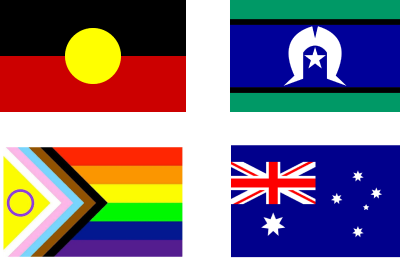
To explore this further, we invited our #ActuallyAutistic community to share their experiences and challenge the harmful myth that avoiding eye contact reflects social disinterest.
Their responses highlight the deeply personal nature of eye contact for Autistic people — it can feel uncomfortably intimate, overwhelming, unnatural, or even necessary in certain contexts. Many also emphasised that while some choose to mask their discomfort to meet social expectations, others prioritise their well-being, valuing authenticity over conformity.
Five clear themes emerged:
We hope you enjoy gaining these insights from our community’s rich bank of Autistic lived experience.
For some Autistic people in our community, eye contact can significantly impact information processing, with some finding it essential for focus and others feeling it disrupts their ability to understand what’s being said.
“I need to look people in the eye, to be able to process what they are saying. I also need to be fairly close to them for auditory processing. If I’m at a meeting … when the person speaking gives a lot of eye contact, I find this very uncomfortable. I then try to break eye contact, or go into an internal dialogue debating which eye to look at, then get confused as to how in the world I am meant to look into someone’s eyes anyway – I cannot look into both at once. At this point, I’ve now lost track of what they were saying – eeekkk …” – Anthea Jane Au
“Eye contact is uncomfortably intimate. Forced eye contact during a conversation makes me lose track of what’s being said, no matter how much I want/need to hear and understand, I just can’t process it.” – Jewel Rose Oshan
“I find it to be a rather intimate connection with someone. I find I can process what people are saying better without making eye contact as focusing on appropriate eye contact detracts from something that someone is saying. I will give enough to acknowledge someone, then I tend to look away because it gets very uncomfortable otherwise.” – Fiona Yip
For some Autistic people in our community, eye contact can be a powerful sensory experience — intensifying during sensory overload, feeling uncomfortably intimate, or heightening sensory overwhelm.
“When I am ramping up or near sensory overload, I cannot make eye contact at all and will need to turn my body away from the speaker to continue having a conversation. When I am regulated, I tend to make too much eye contact.”
– Rainah Miqueli“It feels like staring into those super-bright lights.”
– Carrie Bishop“It’s distracting.” – Dawn-joy Leong
“It’s too intimate for me.” – Kathryn Carver
For some Autistic people in our community, the ability to make eye contact can vary depending on the context — often feeling easier when listening, more challenging when speaking or thinking, and especially draining with unfamiliar people or during sensory disruptions, like mask-wearing.
“I’m fine with eye contact when people are talking to me, if I’m needing to think whilst speaking to someone else I usually don’t make eye contact at all. If I don’t need to think at all about what I’m saying (like responding to ‘do you want a cuppa?’) eye contact is usually fine.” – Sarke Ailuros
“It takes effort (the internal monologue). People I am close with, it doesn’t take as much effort … For everyone else, it is draining (mentally, emotionally and physically).”
– Stacie McKay“I can (probably do) look too much, too intently when a person is talking as I rely heavily on non-verbals. Not the eyes alone but the whole face. Covid was difficult as my brain struggled to process the spoken word while also processing the fact that the mouth was behind a mask. 😷 During that time I had to consciously not look if a masked person was speaking or I didn’t take in anything at all. It also explains why I avoid phone calls. I know I don’t look at all when have to speak, I tend to process what to say & how I’m going to say it easier when I look up which has been misinterpreted as eye rolling 🙄 – Claire Thompson, AuDHD
For some Autistic people in our community, eye contact is closely tied to masking, with societal expectations often prompting strategies like focusing on other parts of the face, using unfocused gazes, or even wearing sunglasses to reduce discomfort — efforts that can be mentally exhausting and detract from authentic communication.
“After a lifetime of masking and society telling me I need to maintain eye contact to ‘be respectful’, I don’t even know what a natural, comfortable level eye contact for me is. As soon as I’m concious of it, I’m no longer doing it naturally, and then I have trouble keeping track of the conversation because I’m overthinking eye contact.” – Sean Hynes
“It feels very violating and icky to me and I don’t do it. I get around it by looking at some other part of the face. Interestingly, I didn’t know I wasn’t making eye contact until I was in my 60s.” – Carol Dale, AuDHD
“I have the ‘look into your soul’ type eye contact. I can lock into looking into people’s eyes and it can feel very intimate. So, I spend most of the time not engaging in too much eye contact so I don’t make other people feel uncomfortable or send the wrong messages about my degree of interest in a person”. – Anonymous
“Masking techniques I use to avoid eye contact include unfocussed gaze; looking at the bridge of their nose; and exaggerated mannerisms to demonstrate that I’m “looking around the room to find the words”. – Jewel Rose Oshan
“Used to hate it as a youngster, didn’t even like looking in the mirror, felt so intense but I had so many career/job centre people bang on about eye contact that I forced myself to do it for interviews. I still prefer to avoid it in everyday life, just feels awkward and it’s easier to concentrate on listening if I don’t force eye contact.” – Lizzy Simmons
“When I was in graduate school, a “concerned mentor” informed me that my lack of eye contact would hurt me professionally. Perhaps he was right since that was over twenty years before my diagnosis and I never met my professional goals.” – Mike’s Neurodivergent Toolbox
“I look at the whole person but if I gaze past the person to allow me to think I notice they look over their shoulder to check what I’m looking at. Awkward!” – Eleanor Dwyer
“I’ve been increasingly needing to wear sunglasses indoors due to my sensory sensitivities, this does help to provide a bit of a barrier to the eye contact challenges/uncomfortability. A few years ago, I would have masked this need & as a result had overload later on, as well as migraine. So for me, eye contact is something I need to support me, but also find challenging.” – Anthea Jane Au
As our Autistic community members unmask and embrace their authentic selves, eye contact often becomes a personal choice — guided by comfort rather than social expectations.
“I’ve gotten into trouble for both making it and not making it. But discovering my likely neurodivergence as an older adult, I now allow myself to do it or not, as I feel comfortable, and invisibly pat myself on the back when I do make eye contact because I now appreciate it as an accomplishment and overcoming a personal challenge. I respect my own vulnerability.” – Esther Lee Deitch, AuDHD

The Reframing Autism team would like to acknowledge the Traditional Owners of the lands on which we have the privilege to learn, work, and grow. Whilst we gather on many different parts of this Country, the RA team walk on the land of the Awabakal, Birpai, Whadjak, and Wiradjuri peoples.
We are committed to honouring the rich culture of the Aboriginal and Torres Strait Islander peoples of this Country, and the diversity and learning opportunities with which they provide us. We extend our gratitude and respect to all Aboriginal and Torres Strait Islander peoples, and to all Elders past and present, for their wisdom, their resilience, and for helping this Country to heal.